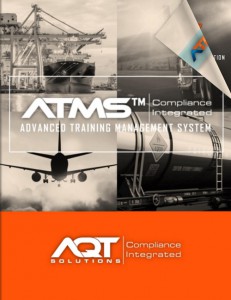Capterra’s Top 5 eLearning Trends for 2016
2015 saw a host of new advances and innovative additions to the instructional designer’s and e-savvy teacher’s online learning arsenal.
From gamified learning management systems, to mLearning advances, to social learning and the adaptation of many MOOCs for corporate training, last year was a banner year for training tech.
We think 2016 will be just as exciting, if not more so.
All that said, here are the top five eLearning trends we think you should be on the lookout for in 2016.
Wearables
This is a separate and distinct (though related) trend from virtual reality (see below for our section on VR). Wearables can be VR headsets, but also encompass a whole other universe of technology that you can put on your body. From smartwatches, to smartglasses like Google Glass, to smartclothing and even smartshoes, wearables are hoping to put a computer into every item in your closet.
The eLearning potential of wearables is enormous, and only just starting to be explored. Augmented reality options for on-the-job training using something like Google Glass or Microsoft HoloLens are an obvious application, and some first steps have been taken here. But other possibilities include using a FitBit-like tracker (Theatro is an example) to help train employees in how to do their tasks more efficiently (think retail), to combining wearable data with the Tin Can Experience API to track learning activities that happen away from a desk.
VR
Yes, we mentioned this in our training tech predictions for last year, but there’s enough exciting things happening in virtual reality education to merit a mention for 2016. First, the much anticipated Oculus Rift headset is finally set to release a consumer version. Previous versions were only for developers and cost a hefty $1,500. The new, $600 option should be able to expand VR to more people, and allow a lot more experimentation in the education space.
Additionally, Google Cardboard, the aptly named VR headset that uses a wearer’s own smartphone, has seen a lot of uptake, and includes some very cooleducational demo apps already. Expect 2016 to explode the number of virtual reality education apps, and beef up the options you have for training learners using VR tools.
Gamification
Another development that we mentioned in a previous prediction piece on LMS trends, gamification is still something that has a lot of potential for growth in the eLearning space.
While there are already several LMSs that incorporate games-based learning or gamification, this functionality is set to really mature and saturate the eLearning market in 2016.
Our recent gamification research found that while there is somewhat widespread adoption of gamification among LMS users (83%) only basic gamification features like points and progress bars had high usage rates. Expect LMS vendors to encourage adoption of more advanced gamification features like avatars and real-time performance feedback by simplifying them and better aligning them with perceived end-user value. Also expect the additional cost of gamification functionality to come down.
eLearning for the Little Guy
Learning management software has historically been a big-ticket purchase. Our own recent LMS research found the average annual spend for an LMS was a whopping $70,614.
But with the expansion of cloud-based LMSs, free LMSs, and even LMSs built on the open-source WordPress platform, 2016 will see these costs come down significantly, enabling smaller companies and organizations to use eLearning tools without breaking the bank. We saw the number of free LMSs almost double last year, and you should expect 2016 to be no different.
Automated Course Authoring
While we’re not yet at the point where the robots are taking all our eLearning jobs, expect to see some big strides in automating some of the more tedious online learning tasks in 2016. This will be especially true for the areas of course authoringand instructional design. Already some tools can auto-generate course materialand documents based on raw inputs, data, and written processes. The next year will see this functionality increase in sophistication and scope.
Others?
What other cool eLearning predictions do you have for 2016? Add them in the comments below!
Source: Capterra Training Technology Blog
Benefit from the Luxury of eLearning
Within an Enterprise Training Platform















